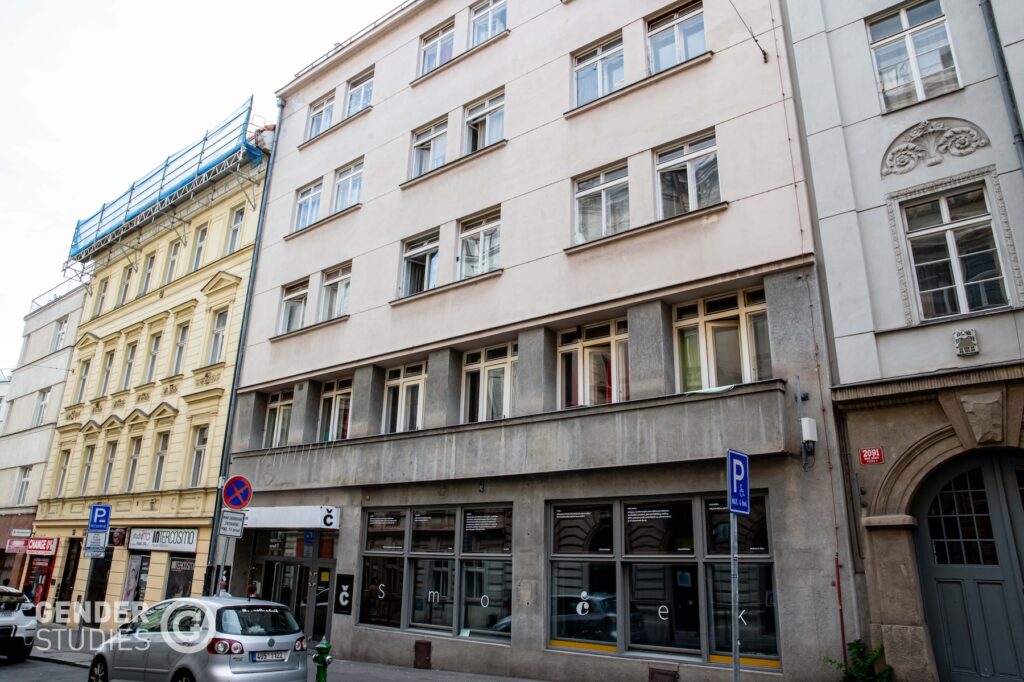The Seat of the Czech Women’s Club
Commissioned by the Czech Women’s Club (co-founded by Charlotte Garrigue Masaryk) and erected in 1933, the building housed a number of women’s organizations. To fund the construction, club members started a cooperative. They raised some of the necessary funds among themselves and borrowed the rest from a financial institution. The credit was paid from membership fees. The construction was promoted by Senator Františka Plamínková, Alice Masaryková, and the first Czech female architect, Milada Petříková-Pavlíková, who designed the building including its interior equipment. The premises comprise a dedicated club lounge, a lecture hall, a library, a restaurant, and guest rooms. The rather humble quarters came with a single bathroom per floor and a shared kitchen. The restaurant was the only area accessible to men.
Milada Petříková-Pavlíková (1895–1985) was born in a physician’s patriotic family in the city of Tábor. She graduated from the Minerva Gymnasium. She was strongly influenced by her aunts, the first Czech female physician Anna Honzáková and a long-term collaborator of Eliška Krásnohorská and Minerva professor Albína Honzáková. Milada’s sister, Libuše Paserová-Pavlíková, promoted Czech music and became the nation’s first female singer to be hired by the La Scala in Milano (in 1929). In 1914, Milada started studying architecture, first as a private tutee, as the Austro-Hungarian law did not yet permit women to become regular students at technical colleges. In 1921, she became the first Czech woman to obtain the engineer’s degree. The Ve Smečkách building, which served as a centre of the Czech women’s movement, was one of her most significant works.
WWII put a dramatic end to the association’s activities. In 1942, the Ve Smečkách building was confiscated by the Nazis and Františka Plamínková was executed; other women activists, including Milada Horáková, went through concentration camps. The building briefly belonged to the movement after the end of the war. However, the association was dissolved after the arrest of Milada Horáková in 1949. In 1952, the Ve Smečkách building was confiscated by the state and continued to serve as women’s quarters. In the early 1960s, the former lecture hall became the seat of the Činoherní klub theatre. In 1990, the Women’s Club was re-established and applied for its building to be returned under property restitution laws. In 1998, feminist organizations organized a rally and started a petition to support the restitution effort. To women’s organizations, this building is closely associated with women’s emancipation and important leaders such as Františka Plamínková or Milada Horáková. However, the restitution effort failed because the re-established Club was not acknowledged as the legal successor of the founding cooperative.









